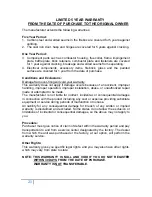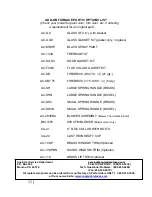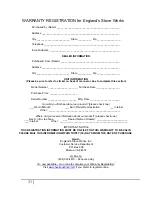
16
After emptying the ashes, the ash pan can be placed back into the unit
and the small door closed.
Never leave the ash door open or the unit unattended.
G. Creosote
Creosote – Formation and Need for Removal
When wood is burned slowly, it produces tar and other organic vapors,
which combine with expelled moisture to form creosote. The creosote
vapors condense in the relatively cool chimney flue of a slow-burning fire.
As a result, creosote residue accumulates on the flue lining. When
ignited, this creosote makes an extremely hot fire. The chimney connector
and chimney should be inspected at least twice monthly during the heating
season to determine if a creosote buildup has occurred. If creosote has
accumulated it should be removed to reduce the risk of a chimney fire.
Please visit our web site,
www.heatredefined.com
and visit your stove model’s
information page for a link to video instructions including proper operation and
best practices.








































